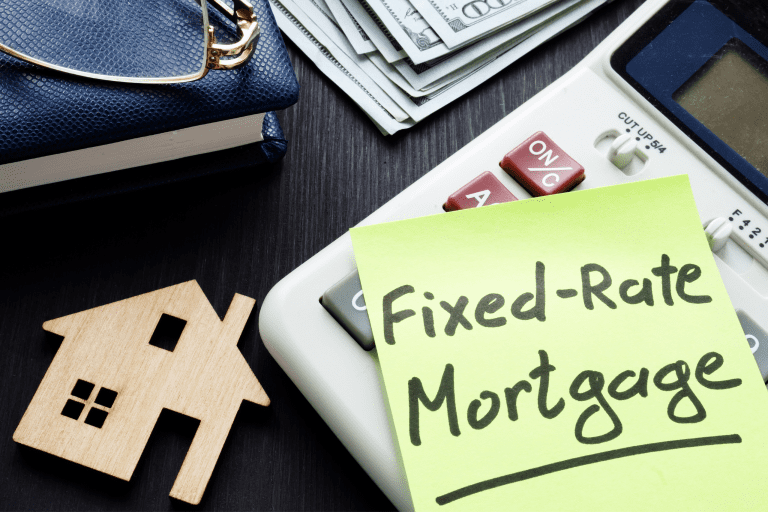
A low or bad credit score – whether caused by adverse credit events on your records, or no credit history to speak of – might not be the be-all and end-all when it comes to getting a mortgage application accepted.
But it can make the process more challenging. It can also limit some of your options when it comes to which lender and products you want to look at.
The good news is that there are a number of things you can do to show you are a reliable borrower. Taking a responsible approach to credit and bringing your score up to scratch can be quite straightforward. We’ve broken these down into three easy stages:
- Deal with the basics
- Put right any issues
- Create a good credit history
Certain tactics might take a little work or time, but the results will put you in a much better position.
Step 1: Deal with the basics
These are the very simple actions you can take to prove that you’re an accountable and responsible individual. This will ensure you have a strong foundation on which to build a solid credit record.
None of them should take too long, and mostly it’s a matter of common sense. If you’ve had any adverse credit issues in the past, we recommend looking at your credit score every year or so.
Get on the electoral register
This simple but effective measure can make a big difference when it comes to applying for a mortgage. Being on the electoral roll not only shows you’re an active member of society. As well as this, it’s also a strong verification of your identity and a valuable anti-fraud tactic.
You’d be surprised how many people aren’t registered at their current address or forget to do so when they move house.
Obtain copies of your credit reports
Use the three main UK credit reference agencies, Equifax, Experian, and TransUnion, to obtain copies of your credit report. All three agencies offer free accounts or free trials, so make use of this!
Since the introduction of GDPR rules, companies are obliged to disclose what information they hold on you. Therefore, the process has become easy, accessible and mainly conducted online.
Each agency uses a different scoring system, but you’ll be able to see exactly where you stand and where any problems might lie.
Correct any errors
Take a thorough look through each of the reports and make sure they are all accurate. It has been known for the agencies to still include debts that have been settled or marks that should have been removed. It’s even possible that they may hold incorrect address or other details for you, so double check.
If you do spot anything that is incorrect, write to the agency concerned straight away. Request that their records be updated and supply supporting documentation if possible.
Changes might take a few weeks to appear, and you should get new copies of the report to make sure everything is as it should be. It’s vitally important that lenders see accurate and correct information when they carry out credit checks. This could be the make or break between being offered a mortgage deal.
Close any unused credit accounts
It’s not uncommon for people to have opened several accounts with stores, or to have a few credit cards available, just in case. However, lenders may see unused lines of credit as a sign that an applicant is nervous about their finances. Leading them to wonder if you will be a good lending prospect.
If you have any accounts like this, close them down and keep your finances as simple as possible.
Once these stages are completed, you should now have a credit record that accurately reflects your current credit situation. The actual entries on your reports will show you in either a good or bad light. Evidence of healthy borrowing is great, but any adverse credit events may hinder your efforts to get a mortgage. This brings us nicely onto the next step.
Step 2: Put right any issues
If you’ve experienced financial issues previously, then it could be that there are still some debts outstanding or other marks on your file. If you can do anything about these issues, then you should do so. If put right, you can move on as cleanly as possible to building up a more positive credit history.
We understand that not all issues can be resolved easily though. For example, you may need to let a year pass after being declared bankrupt. But it’s worth remembering that the longer ago they happened, then the less weight they will carry in the eyes of lenders.
This is especially true if you have taken steps to enhance your credit record in other ways. Here are the typical actions that potential borrowers with bad credit may need to take:
Make sure payments are up to date
A string of late payments on your credit file or a balance due left hanging can count against your credit score. It’s likely that lenders will think twice about granting you a loan if this is the case.
Make sure all your regular payments are up to date and set up direct debits to ensure you don’t miss any in future if necessary. A history of always paying bills or repayment instalments on time will stand in your favour.
Settle any outstanding debts
Paying off any balances due on debts and loans will help your credit score, especially if they are connected with a CCJ or IVA.
If you have multiple smaller debts then it might make sense to consolidate them into one larger loan. This way, it will be much easier to manage the debt, and it shows lenders you take money management seriously.
Marks will fall off your credit history after six years but, no matter how historic, lenders will look more favourably on debts that have been settled. So, try to clear the decks as much as possible.
Step 3: Create a good credit history
Please be aware, we only recommend this step for those who have little or no credit history. After you have done everything you can to put your finances on a firm footing, you can then take proactive steps to enhance your credit records. Anything showing a healthy approach to credit will cast you in a good light with lenders.
To create a new pattern of responsible, well-managed borrowing, you need to take out some borrowings to manage. A couple of simple examples might be taking out a new phone contract or buying larger household items on a payment plan.
For people with no or a low credit score, this can be very useful. But, these will not carry the same weight as a loan from a high street bank.
If managed responsibly, a few options are listed below can help you improve your credit.
Get a credit card
While you should not risk getting heavily into debt, smaller scale borrowing through the use of a credit card can be great. It will show that you can regularly take out credit and pay it back on time on a monthly basis.
Use it instead of a debit card for your usual regular household spending, and always pay it off on time when you need to do so. This will put a record of regular payments on your file.
If you’re new to credit cards, you will probably have plenty of options. But if you have a blemished credit record you may have to take out ‘bad debt’ credit card, or a ‘credit builder’ card.
In all cases, never let credit build up on the account. The reason for getting one is to build up a clean record of payments, and missing payments will defeat the purpose.
Take out a loan
Much the same as taking out a credit card, this is another method to show you can borrow money and then repay it reliably.
The only type of loan you must avoid at all costs for this exercise is a payday loan. Lenders regard payday loans as a sign that you have trouble managing your usual household budgets and cannot live within your means. This will count against you in their assessment of your mortgage application.
Open a savings account
In addition to taking out new lines of credit, you could also start a new savings account, and pay into it regularly.
Even if you’re only able to manage smaller amounts, the fact you’re putting money away will show you can manage your cash flow. This will count in your favour in the eyes of lenders.
Reduce your level of debt
While we have suggested taking out new lines of credit, it’s worth doing what you can to reduce your overall level of debt. Particularly with credit cards that have been taken to the limit.
Perhaps also destroy the card to avoid the temptation of further spending. Again, you’re aiming to show regular payments towards credit balances, and a reduction of overall debt.
Keep on top of any payments
It should go without saying, but staying on top of payments is paramount in maintaining a good credit rating. Late or missed payments will show up on your credit records and will stay on them for six years.
Depending on the credit event, it can have a detrimental effect when applying for things, such as a mortgage.
The easiest way to ensure prompt payments is to set up direct debits or standing orders where possible. This way you never need to purely rely on your memory to pay bills or instalments on time. You just need to make sure you have sufficient funds in your bank account to meet them.
- Blog



